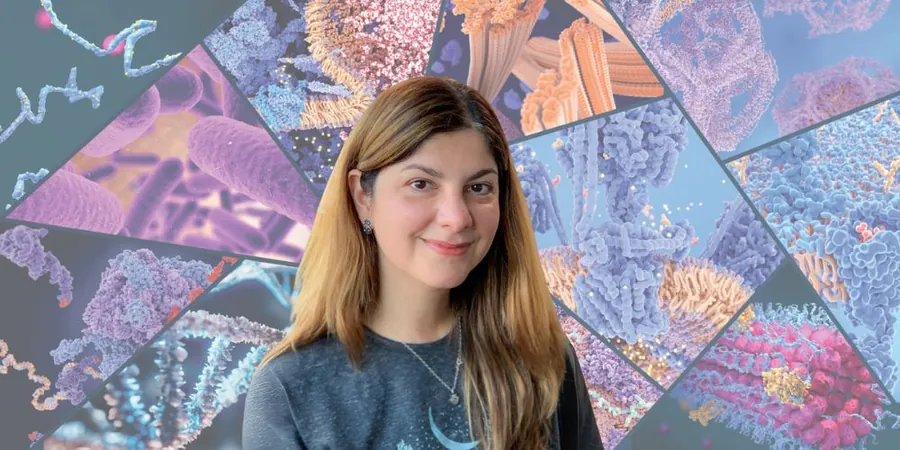
Unveiling the Secrets of HCMV: How This Virus Takes Over Host Cells and Influences Disease
2025-08-12
Author: Wei
The Intricate Dance of Viruses and Host Cells
Did you know that over 200 viruses share our world, relying on our living cells for survival? These insidious invaders induce dramatic transformations in both the host cell and its surrounding environment. Researchers like Ileana Cristea are delving deep into these changes to shed light on the complex relationship between viruses and their hosts.
Insights from a Leading Expert
Cristea recently presented groundbreaking findings during the American Society for Biochemistry and Molecular Biology's webinar series, ‘Breakthroughs.’ As a molecular biology professor at Princeton University and editor-in-chief of *Molecular & Cellular Proteomics*, she explored how viral infections can dramatically reshape cellular structures and alter metabolism, connecting these transformations to larger disease processes.
Astonishing Organelles Under Attack
One fascinating revelation from her research involves the remodeling of organelles. Key players like mitochondria—our energy powerhouses—and the endoplasmic reticulum (ER), responsible for protein and lipid synthesis, often face disruption during viral infections. "Despite varying replication strategies and genomes, many viruses share a common goal: inducing organelle remodeling," noted Cristea.
A Novel Discovery: Mitochondria-ER Encapsulations
In a groundbreaking study on human cytomegalovirus (HCMV), a double-stranded DNA virus, Cristea and her team observed surprising mitochondrial fragmentation that actually ramped up cellular respiration. Utilizing advanced methods like mass spectrometry and microscopy, they identified a new interaction between organelles: small mitochondrial fragments becoming encased within ER structures, termed mitochondria-ER encapsulations (MENCs). This intriguing finding proved to be a constant feature during later stages of HCMV infection.
Metabolism Meets Viral Strategy
The research revealed that MENCs play a crucial role in sustaining elevated cellular respiration—an advantageous outcome for the virus itself. Interestingly, similar metabolic patterns linked to mitochondrial fragmentation have been observed in various diseases, inviting speculation.
The Cancer Connection
Cristea connected her findings with cancer, noting that HCMV is recognized as an oncomodulatory virus. In melanoma cells, they once again saw mitochondrial fragmentation encapsulated in MENCs, with increased metabolic activity correlating to greater cancer severity.
Lactate: A Double-Edged Sword
Viral infections also disrupt the host's metabolism significantly, especially increasing lactate levels—a byproduct known to suppress immune responses in cancer. Cristea’s recent studies revealed that lactate actually enhances viral replication. An analysis of both HCMV and herpes simplex virus type 1 (HSV-1) showed lactate-modified host defense proteins, causing a reduction in immune signaling which ultimately promoted infection.
The Ripple Effect on Neighboring Cells
Cristea's team is also examining how viruses affect the microenvironment surrounding infected cells. Using innovative fluorescence assays, they uncovered that an infection could impede cell division and dampen the immune defenses of neighboring cells, thereby aiding the spread of HCMV, HSV-1, and influenza.
"We initially assumed that neighboring cells would ramp up their defenses, but the opposite occurred—they were left vulnerable," Cristea explained.
Broadening the Scope: Beyond Viral Infections
While much of her research has centered around viruses, Cristea's lab is now investigating whether these cellular mechanisms extend to other diseases, including cancer, highlighting the far-reaching implications of her discoveries.

 Brasil (PT)
Brasil (PT)
 Canada (EN)
Canada (EN)
 Chile (ES)
Chile (ES)
 Česko (CS)
Česko (CS)
 대한민국 (KO)
대한민국 (KO)
 España (ES)
España (ES)
 France (FR)
France (FR)
 Hong Kong (EN)
Hong Kong (EN)
 Italia (IT)
Italia (IT)
 日本 (JA)
日本 (JA)
 Magyarország (HU)
Magyarország (HU)
 Norge (NO)
Norge (NO)
 Polska (PL)
Polska (PL)
 Schweiz (DE)
Schweiz (DE)
 Singapore (EN)
Singapore (EN)
 Sverige (SV)
Sverige (SV)
 Suomi (FI)
Suomi (FI)
 Türkiye (TR)
Türkiye (TR)
 الإمارات العربية المتحدة (AR)
الإمارات العربية المتحدة (AR)